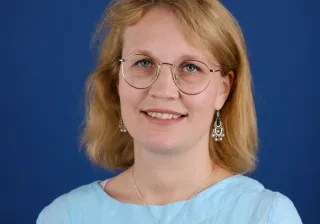What do Vice Presidents actually do at VTT? After eight months of standing in as one, Principal Scientist Marko Jurvansuu can answer this coffee table question. Marko has a wide experience in job rotation: he has worked at VTT as a research scientist, account manager as well as in various leadership positions.
Sometimes you get an offer you just cannot refuse. That happened to me on one early winter’s day, when I was asked to take up the duties of Vice President, Data-driven Solutions at VTT. I had already promised to do something else, but nevertheless jumped on board as temporary VP. When the decision had been made, I slumped in my chair, uncertain of what to do next. But it only took a minute for the ”old leader role” within me to awaken. There was no doubt about the first thing on my agenda: hold a staff meeting to let everybody know about my appointment. That got the ball rolling!
Compared to my prior experience of leadership positions, I now had twice the staff. It was a 150-person research area, operating as six teams in three cities, with research subjects ranging from industrial internet solutions to smart health care. The majority of my staff consists of scientists, with some team leaders, research professors and a research manager thrown into the mix. I was also responsible for an extensive research environment including ICT equipment, sensors, 5G test network base stations and servers.
Absorbing new things quickly and trusting people
I will always look back at my time as VP as an unbelievable experience. I really enjoyed letting rip and putting my capacity to maximal use. The sheer number of issues to address forces you to a mode in which you have to absorb, decide and delegate things very quickly. You have to take care of things through leadership, policies, new operating models and taking a personal hand in things.
You had to be present. The matters being discussed in meetings were usually new to me and I really had to listen and pay attention in order to formulate an opinion in the short time available. I also learned to trust people more. What was agreed was also done, most often even better than I imagined.
I created the three-finger rule for prioritising work. First-finger matters (VP duties) always came first, and going into the minutiae was permitted. Second-finger matters were handled through leadership and delegation, without going into the details (for me, it was a project I coordinated). Third-finger matters (i.e. other things) were only put onto the agenda after these. This code helped me manage my own work.
Close cooperation with HR
There is a lot of work related to human resources, but it is mostly invisible due to questions of confidentiality. In addition to the normal development discussions, we run various other personnel development activities at VTT. There were raises to be negotiated and triannual individual scientist rewards for significant results, to name a few. Reviewing all proposals and making sure that the rewards are fair and in line with policies is quite a process. We also employed a variety of HR processes to identify competencies and deficiencies, training needs and ways of motivating VTT people.
The unequal distribution of workload and competencies in and between teams is a common problem. We addressed the issue by merging two teams and launching internal competence development projects, always keeping an eye on the resourcing aspect. I wanted projects to improve and advance our competencies with measures that also motivate the individual. I released extra resources to the team leaders for on-the-spot development needs. There were a few trickier HR discussions, but everything was resolved. My tenure involved some major recruitments, such as a new team leader and several experienced scientists. We found a research professor for the Smart Health area through in-house recruitment and opened a new professorship, for which the recruitment process is still under way.
There’s nothing like breaking new ground
I got to experience some memorable successes during my term. I will never forget the enthusiasm we felt with my Research Manager while sketching out new research on renewing our competencies on the basis of the needs of VTT’s customers. And we also obtained funding for our ideas! I believe that these projects and the new competencies of our scientists will generate added value in the areas of edge computing, AI and digital twins for our industrial internet customer base.
The joint drafting of VTT’s AI strategy and marketing materials by the management of all Business Areas proved that we can work together. On the same theme, we were able to invest in an AI platform that enables the processing of “hot” stream data in large volumes. The platform is now housed in the same hardware room with the 5G test network core, creating a globally unique research enabler. It is suitable for the ultra-fast edge computing required by 5G applications, such as robot remote control or the utilisation of smart traffic systems or real-time virtual reality models. A couple of scientists are also starting ”AI tests”, which sounds like a highly promising subject that would be a perfect fit for the platform.
AI manager?
In the future, I will be coordinating the Reboot IoT Factory project that aims to accelerate the digitalisation of the manufacturing industry through the IoT, with five leading Finnish factories serving as the innovation platform (rebootiotfactory.com). In addition to leveraging data analytics and AI, we will also develop some new tools for the work revolution. One of the concepts we are working on is an AI manager, to whom I will hopefully be delegating duties soon!




